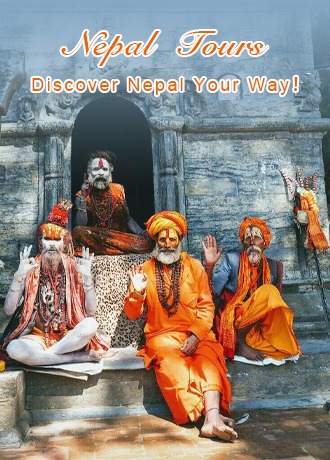Dashain Festival in Nepal
- by Catherine
- Last Updated: 2025-01-07
Dashain(Nepalese: दशैंDaśãi, also Baḍādaśãiबदशैं), also known as Vijaya Dashami is the biggest and longest festival for 15-day celebrated by Hindu Origin Nepalese all over the world. It is held every year in June of the Nepalese calendar (from September to October in the Gregorian calendar). In 2025, Dashain falls in September. 22nd.
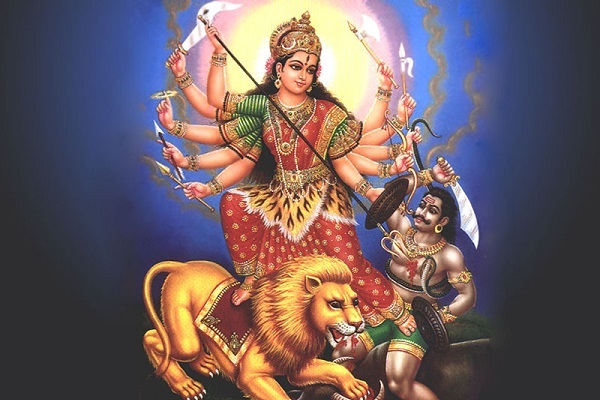 "Dashain" means "tenth". It's originally from Hinduism to celebrate that Shiva’s wife Parvati, incarnating as the goddess of war Durga and holding weapons of the gods, fought against the buffalo demon Mahishasura for 9 days, and finally slew the demon on the 10th day. During the Dasain, there are many customs such as "setting holy pots", "presenting sacred flowers", "playing on the swings", etc. Goddess Durga is worshipped and offered animal sacrifices throughout Nepal and parts of India.
"Dashain" means "tenth". It's originally from Hinduism to celebrate that Shiva’s wife Parvati, incarnating as the goddess of war Durga and holding weapons of the gods, fought against the buffalo demon Mahishasura for 9 days, and finally slew the demon on the 10th day. During the Dasain, there are many customs such as "setting holy pots", "presenting sacred flowers", "playing on the swings", etc. Goddess Durga is worshipped and offered animal sacrifices throughout Nepal and parts of India.
This Nepali festival lasts for fifteen days, and the most important days are the first, seventh, eighth, ninth, and tenth days. The night of the ninth day is called the "Night of Dashain". The tenth day is called "the 10th day of victory." The public holidays are usually 7 days. All government offices, educational institutions, and other departments will remain closed during the holiday season.
In addition, Dashain is also a happy time for family gatherings as it's just before the autumn harvest when Nepalese celebrate the fertility of the land and the harvest of the year. Therefore this festival is also considered to have the effect of emphasizing family reunion and alleviating social conflicts.
Legends
Dashain symbolizes the victory of justice over evil. According to legend, Durga, the goddess of castration with eighteen hands and ten incarnations, dressed in a red robe, riding a lion or tiger, holding different magic weapons in each hand, backed by the gods, fought fiercely Buffalo Mahishasura for nine days and nights, and finally killed the demon and saved the kingdom of heaven. In order to commemorate the merits of Durga, the Kingdom of Nepal respected her as the "sacred protector", and animal sacrifices became the most common and solemn ritual.
Buddhists celebrate the Dashain in Nepal to commemorate King Ashoka's promotion of Buddhism and non-killing.
In India, Dashain is to commemorate Rama's (the chief character in the Hindu epic) victory over the Ravana.
Ceremony and Celebration
Day 1 Ghatasthapana, sowing holy grass Jamara
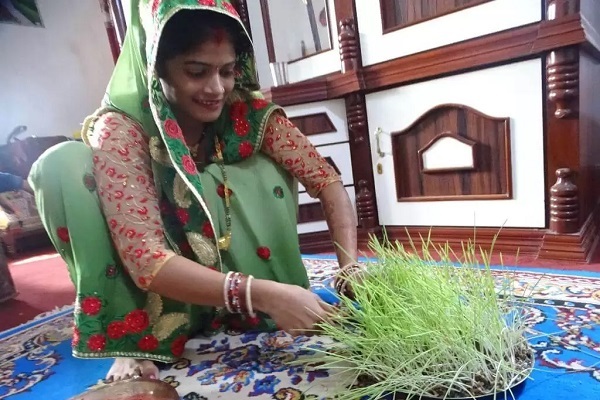 Ghatasthapana (meaning sowing the holy grass) marks the beginning of the Dasain. People will respectfully place pottery called Kalasha to symbolize Goddess Durga. On this day, people fill the Kalasha container with holy water, mix it with cinnabar, sow barley, sesame, or other plant seeds, and give it to the priest to pray for the blessing of Goddess Durga. After the ceremony, the pot will be placed in the room and protected from direct sunlight. Traditionally, only men of the family can enter the room and worship Kalasha once in the morning. However, with the progress of society, women also have the right to worship. People spread holy water on grass every day until five or six inches of yellow seedlings grow. The process generally lasts about seven days and the grass is called Jamara.
Ghatasthapana (meaning sowing the holy grass) marks the beginning of the Dasain. People will respectfully place pottery called Kalasha to symbolize Goddess Durga. On this day, people fill the Kalasha container with holy water, mix it with cinnabar, sow barley, sesame, or other plant seeds, and give it to the priest to pray for the blessing of Goddess Durga. After the ceremony, the pot will be placed in the room and protected from direct sunlight. Traditionally, only men of the family can enter the room and worship Kalasha once in the morning. However, with the progress of society, women also have the right to worship. People spread holy water on grass every day until five or six inches of yellow seedlings grow. The process generally lasts about seven days and the grass is called Jamara.
Day 7 Phulpati
Phulpati (means sacred flowers, leaves and plants) is a grand ceremony on the seventh day of Dashain.
During the Kingdom Period, on this day, the Brahmins from Gurkha (central Nepal) would bring the royal holy grass pot Kalasha, holy grass Jamara, banana stems, as well as sugarcane tied with red cloth to the Kathmandu Valley after three days of trekking about 169 kilometers. Hundreds of government officials gathered together, wearing traditional dresses, to witness the celebration of the Nepalese army at Hanuman Palace in Durbar Square, Kathmandu.
After 2008, the royal family was overthrown, and the two-hundred-year tradition was changed. The Prime Minister of Nepal replaces the King to hold the ceremony.
Day 8 Maha Asthami
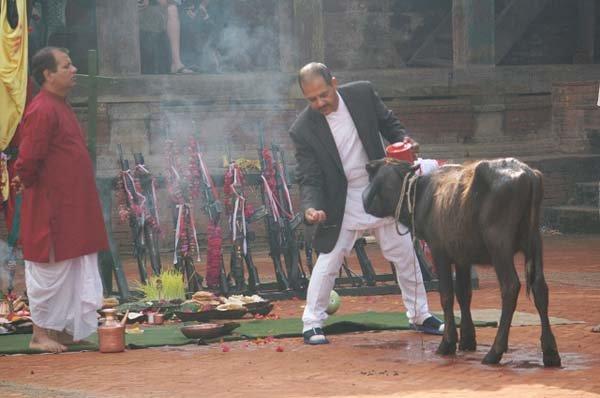 The eighth day is a bloody day, which is considered to be the day of Kali, the scariest incarnation of Goddess Durga. Kali is a terrifying goddess of slaughter, symbolizing the long night that shrouded the world before the end. Thousands of temples across the country slaughter livestock to appease the goddess. Blood, a symbol of fertility, is the best sacrifice for the goddess.
The eighth day is a bloody day, which is considered to be the day of Kali, the scariest incarnation of Goddess Durga. Kali is a terrifying goddess of slaughter, symbolizing the long night that shrouded the world before the end. Thousands of temples across the country slaughter livestock to appease the goddess. Blood, a symbol of fertility, is the best sacrifice for the goddess.
This night is called “a dark night”. At midnight, in the Kot Square near Kathmandu Durbar Square, Nepalese will kill 8 buffaloes and 108 goats with one slash of each. After being consecrated to the Goddess, the meat (called "prasad" in Nepali) will be brought home by the citizens, which is believed to bring good luck to people.
Day 9 Maha Navami, presenting sacred flowers
The ninth day is called Mahanavami, "the great ninth day", which represents the glorious victory of Goddess Durga. This is the last day of Navarati (simply, the whole combat of defeating the Buffalo monster).
The celebration reaches its peak on this day. The army will use white bulls for formal sacrifices to pray to the Durga for invincible courage. On this day, people will also slaughter their livestock to sacrifice their cars or motorcycles, and airlines will sprinkle blood on airplane tires, hoping to avoid traffic accidents.
Three Taleju temples in Kathmandu, Patan, and Bhaktapur, respectively, will open to the public only on this day a year. People line up to visit the Taleju Temple and present flowers to the guardian goddess of the royal family.
All the families would eat goat meat that night.
Day 10 Vijaya/Bijaya Dashami, putting Dashain tika
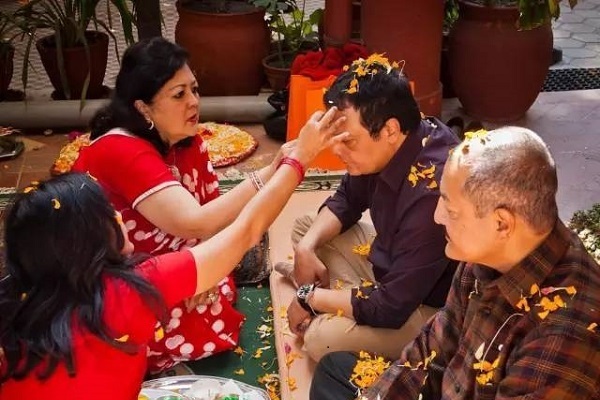 It's the most auspicious day of Dashain festival in Nepal. Today is family gathering day. Family members greet each other with cards. Elders would put “tika”(red cinnabar auspicious mole) on the forehead of the younger family members, which is a mixture of rice, yogurt and vermilion. They would also send younger relatives Jamara (sowed on the first day) to bless them. In the evening, there are parades and mask dances, celebrating Rama's victory over the Ravana in Ramayana (major Sanskrit epic of ancient India).
It's the most auspicious day of Dashain festival in Nepal. Today is family gathering day. Family members greet each other with cards. Elders would put “tika”(red cinnabar auspicious mole) on the forehead of the younger family members, which is a mixture of rice, yogurt and vermilion. They would also send younger relatives Jamara (sowed on the first day) to bless them. In the evening, there are parades and mask dances, celebrating Rama's victory over the Ravana in Ramayana (major Sanskrit epic of ancient India).
This day is usually considered the first day of the Nepali Dasai. In many areas of India, people will erect huge statues of "Ravana" filled with gunpowder, dress up as "Rama" and light them like rockets.
Day 15 Kojagrata Purnima
The last day of the Dashain is called Kojagrata Purnima, which is a full moon night.
Kojagrata literally means "Who is awake?" On this day, Lakshmi, the goddess of wealth and luck, will come to the earth and bless those who have not fallen asleep all night (Gospel for insomniacs). Nepalese people usually gamble overnight.
Festival Customs
Playing cards is another way to celebrate Dashain. The adults of the family get together and spend the whole day playing cards and joking with each other.
Playing on the swings, called “ping” in Nepali, is one of the most popular entertainment activities during the Dasain. Many people will place the swings by the lake or under the snow-capped mountains, which is extremely appealing.
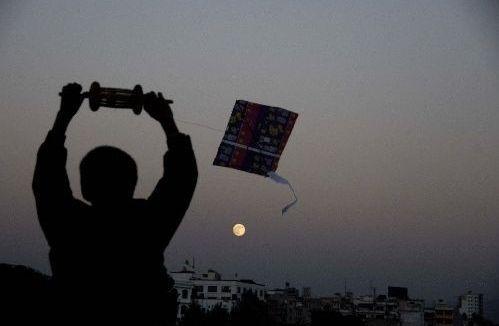 Flying kites is considered a way to remind the gods not to rain anymore. You can see people of all ages flying kites on their roofs. Kites of different shapes and colors fly in the sky and the cheerful laughter of "Changa cheit" echoes in the air (this phrase in Nepali is usually used when one person successfully cuts off the other's kite).
Flying kites is considered a way to remind the gods not to rain anymore. You can see people of all ages flying kites on their roofs. Kites of different shapes and colors fly in the sky and the cheerful laughter of "Changa cheit" echoes in the air (this phrase in Nepali is usually used when one person successfully cuts off the other's kite).
Shopping and dressing in new clothes are an important part of the festival celebration. Many Nepalese live in rural areas and their families are not wealthy. They only buy new clothes at the Dashain. In addition, almost all stores across the country have holiday offers and discounts, which are more attractive to shoppers. Clothes are the item with the highest sales during the holiday season.
Riding Ferris wheels and swings are usual forms to entertain the public in small fairs. In cities, there are usually business exhibitions and celebrations.
During the Dashain Festival, the slaughter of animals is legal to commemorate the bloody battle between the "god" and the "demon". Tens of thousands of animals, including buffaloes, goats, ducks, and chickens, are slaughtered every year in Dashain. This has been regarded as an important traditional ritual and is believed to appease the wrath of the goddess. Almost all temples, especially the Durga and Kali temples, will carry out living sacrifices. On Asthami and Navami two days, the sacrifice reaches its peak. Not only religiously but also secularly, living sacrifices are also of great significance. People get the meat they need during the festival.
The Timetable of Dashain Festivals
| Year | D7 Phulpati | D8 Maha Asthami | D9 Maha Navami | D10 Vijaya Dashami |
| 2020 | Oct. 23rd | Oct. 24th | Oct. 25th | Oct. 26th |
| 2021 | Oct. 12th | Oct. 13th | Oct. 14th | Oct. 15th |
| 2022 | Oct. 2nd | Oct. 3rd | Oct. 4th | Oct. 5th |
| 2023 | Oct. 21st | Oct. 22nd | Oct. 23rd | Oct. 24th |
| 2024 | Oct. 10th | Oct. 11th | Oct. 12th | Oct. 13th |
| 2025 | Sep. 29th | Sep. 30th | Oct. 1st | Oct. 2nd |
Related Articles
- What are the Most Significant Tibetan Festivals?
- Niyang River
- Grand Festivals and Holidays of Nepal
- Tibet Festival Tours
- Norbulingka
- Tibetan Shoton Festival
- Top 10 Grand Festivals in Bhutan
- 12 Tibetan Deities
- Boudhanath Stupa
- Qinghai Lake
Email response within 0.5~24 hours.


